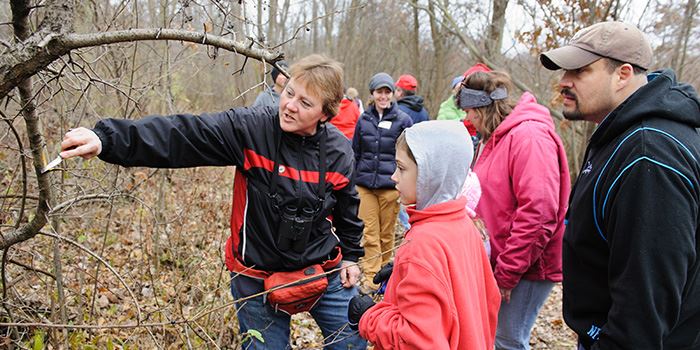Emerald Ash Borer Monitoring And Research

Emerald Ash Borer (Agrilus planipennis), an introduced insect pest, has killed millions of ash trees in the Midwest and is spreading rapidly.
The impact of EAB is greatest in riparian areas and swamps where ash is the most abundant tree species. As the ash trees are killed, large canopy gaps are created, and both native plants and invasive plants respond to the increased light in the understory. In turn, these changes reverberate through the ecosystem, affecting other organisms and ecosystem processes.
The effects of the emerald ash borer on forest ecosystems are being studied through yearly data collection at monitoring plots across the region, including research plots in the Oak Openings area.
Metroparks and the USDA Forest Service are collaborating on a project involving an intensive survey of Swan Creek and a restoration experiment at Oak Openings Preserve Metropark.
A few years ago, ash was the most abundant tree species in the Swan Creek floodplain. Now, nearly all of these ash trees have died. A small number of healthy-looking ash trees were discovered and will be monitored and tested for resistance to EAB. It is too early to determine the fate of these ash trees as EAB populations are persisting at low densities.
Researchers have begun to study the restoration of EAB-impacted ecosystems through control of invasive plants and planting of native trees, including Dutch elm disease-tolerant elm seedlings.